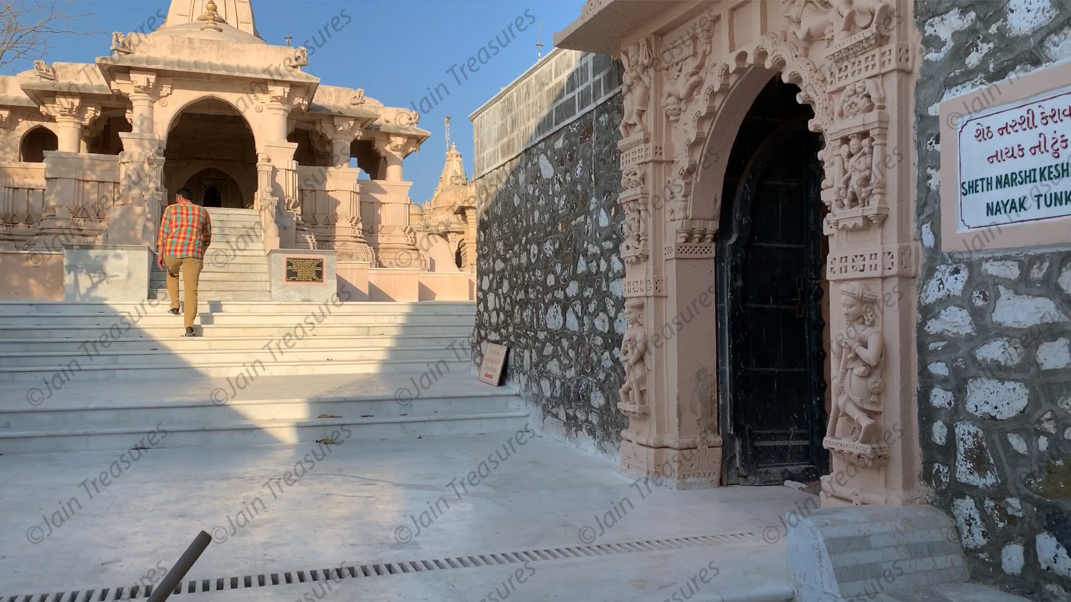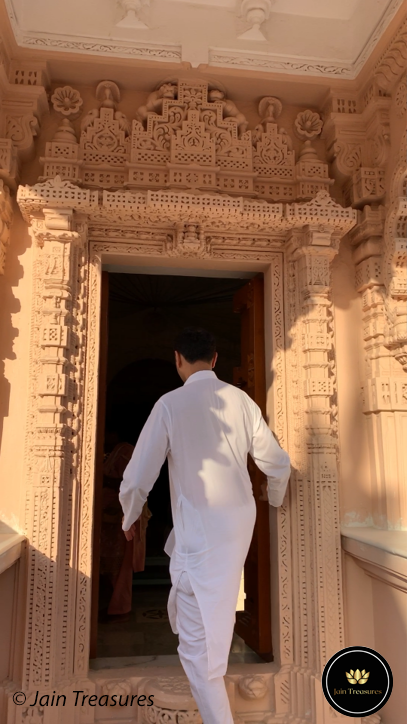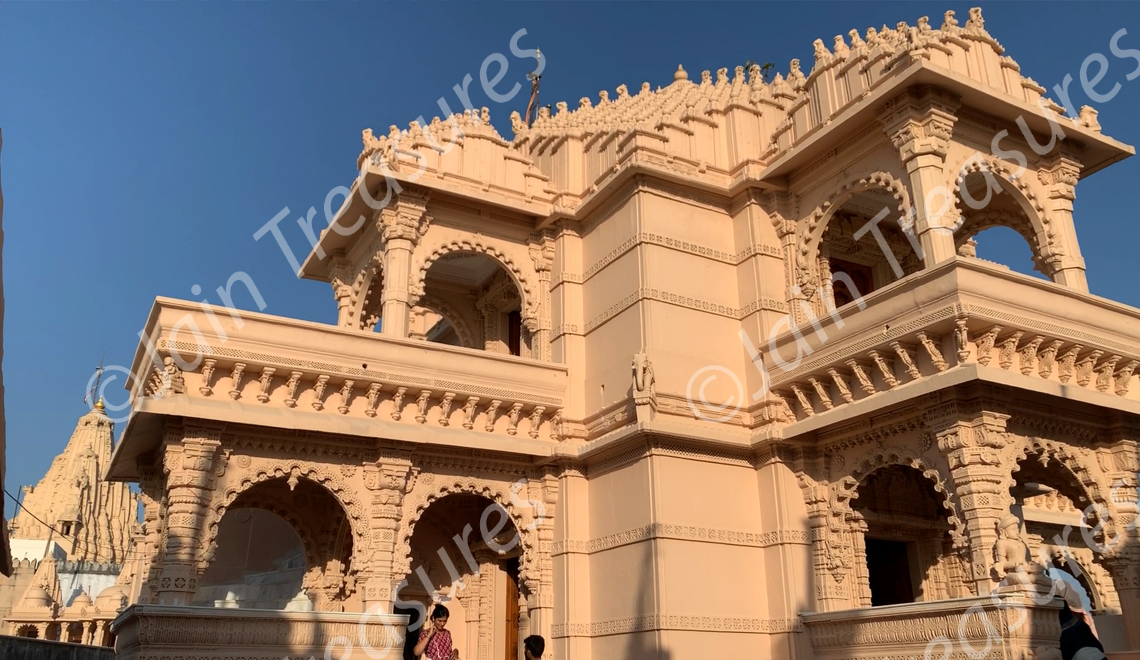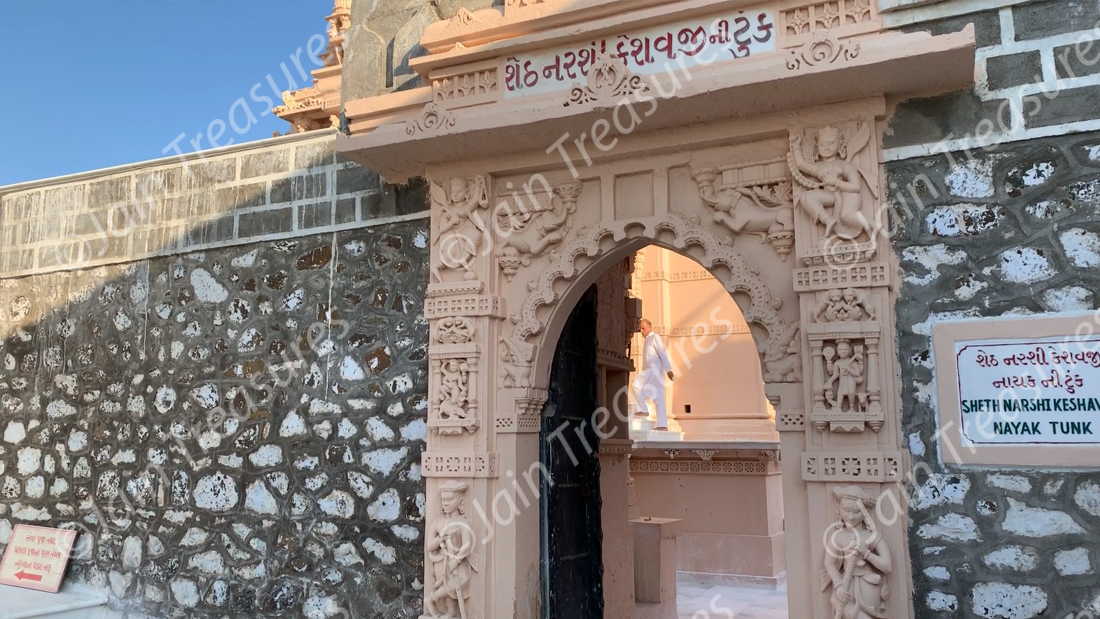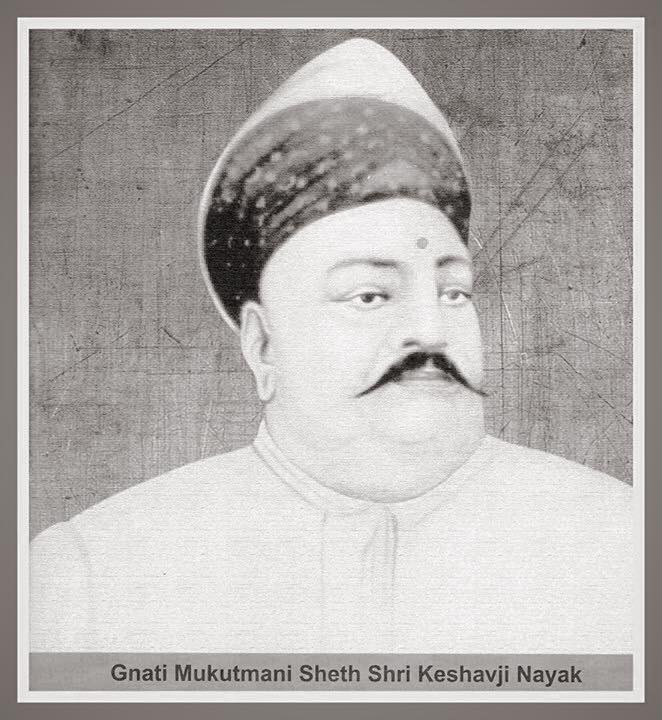
A city of temples
Table of Contents
Navtuk

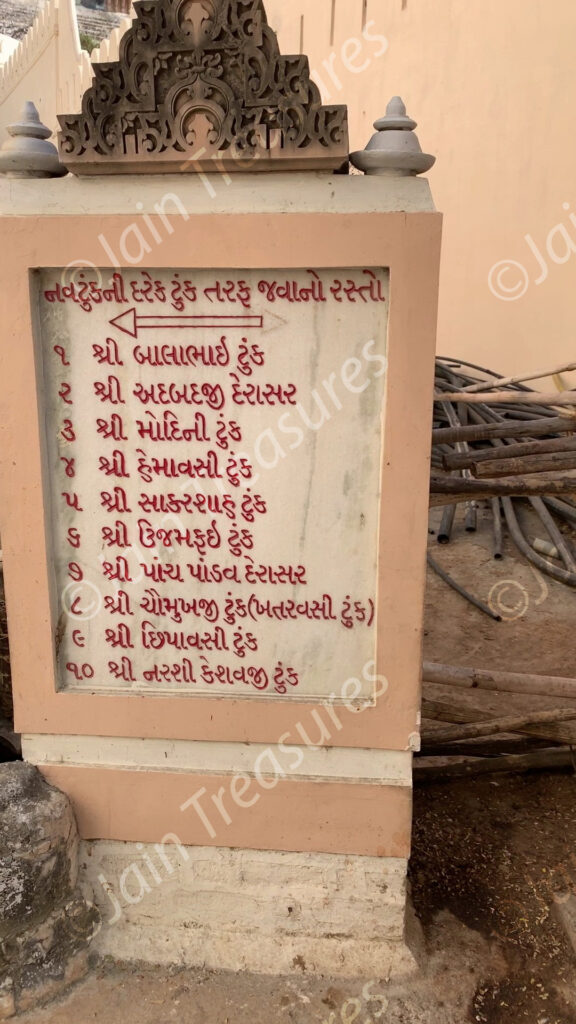
As one climbs Shatrunjay, after a short while you reach a bifurcation. One path leads to the main tuk whilst another leads you to the Navtuk from which you can also reach the main tuk.
The above sign gives the names of the 9 tuks (peaks) within the Shatrunjay hills
- Shree Balabhai Tuk
- Shree Adbadji Derasar (temple)
- Shree Modi‘s Tuk
- Shree Hemavasi Tuk
- Shree Sakarshah Tuk
- Shree Ujamfai‘s Tuk
- Shree Panch (five) pandavas derasar (temple)
- Shree Chaumukhi Tuk (Khatavasi Tuk) also known as Sava Soma Tuk
- Shree Chipavasi Tuk
- Shree Narshi Keshavji Tuk
Angaarsha Pir (Peer) of Palitana
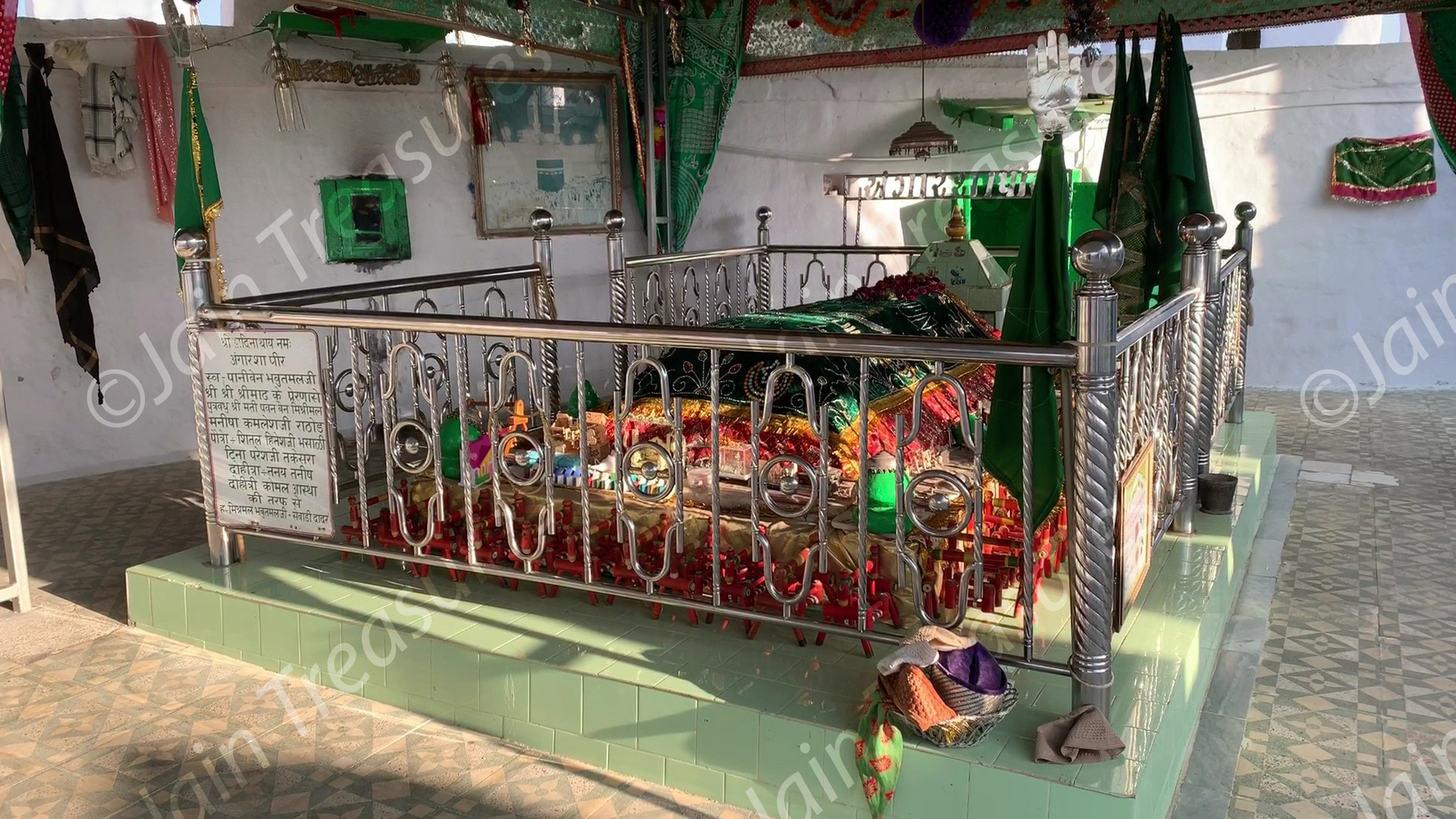
Really! A Muslim place of worship at one of the holiest Jain pilgrim sites.
Indeed.
Jains, Hindus and Muslims have shared the land of India for centuries. I found two versions of the antiquity of this unique place of worship.
The first goes back to the 14th century, when Allaudin Khilji (yes, the same person who was after Padmavati as portrayed in the Bollywood movie) decided to plunder the riches of the temples at Palitana and destroy any idols that were not related to the Muslim faith. Not everyone shared his extremist views and there was a Sufi Pir (in Persian, pir means elder, spiritual guide or saint) named Angaarsha who admonished Alludin not to commit such atrocious deeds. Allaudin was taken aback at how a fellow Muslim was protecting the temples of Kafirs (meaning to cover something implying that those who see the truth of Islam yet “cover it” and are considered to be sworn enemies of Islam). Allaudin decided to ignore the senseless plea and legend believes that Angaarsha through divine power burnt most of Allaudin’s army and pushed him away from the sacred temple complex. Since then Angaarsha became a holy person to the Jains as well. (Angara in Sanskrit means charcoal (burning or not) or red colour giving it a connotation of fire).
The second version states that it is a durgah (graves or shrines of Sufi saints) of Hengar, a Muslim Pir. He is thought to have supernatural powers and could control the elements of nature. Legend states that he tried to use his powers on Lord Adinath in vain and instead was struck dead by his own powers. To keep his soul at peace, the pujaris (priests) decided to dedicate a shrine for him.
Today people from all faiths come here and request for favours. Its an interesting tradition, as you ask for something you leave a small symbol of what you want from the Pir. So childless women leave a wooden cradle, people with Asthma leave Asthma pumps and so on. You can be very imaginative here. Of course, once you wishes are fulfilled you come back and make a donation and offer a chadder (shawl) to the Pir.
Sava Soma Tuk (Chaumukhi tuk)
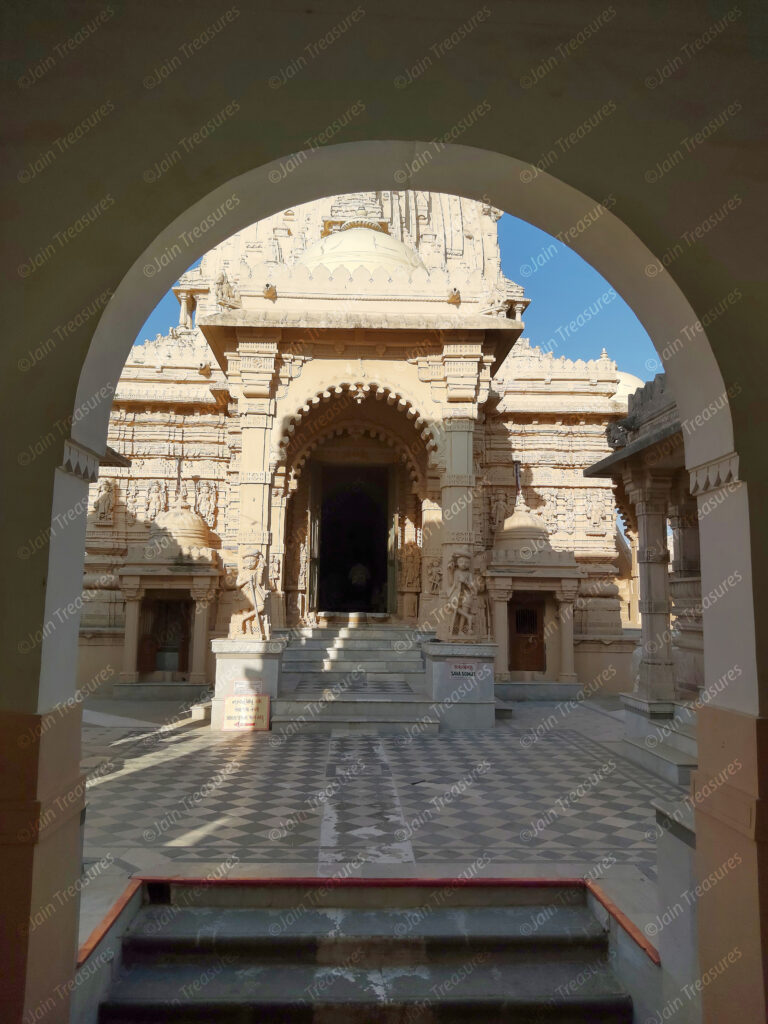
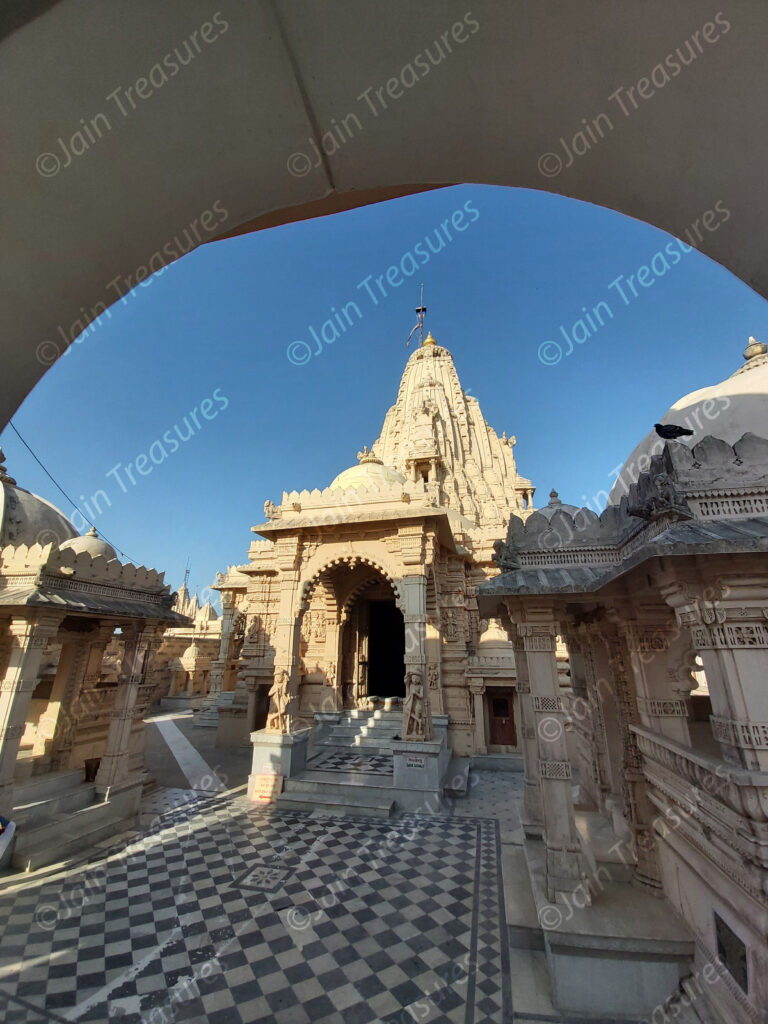
As we drive towards Palitana, we can see a temple in the far distance on top of Shatrunjay hills and people often mistake this to be the main Adeshwar Bhagwan tuk. However, it is the Sava Soma tuk which is the highest spire within the entire complex of temples and can be seen from over 20kms away. It is also called Chaumukhi Tuk as in the main temple there are four idols of Lord Adeshwar facing the four cardinal directions.
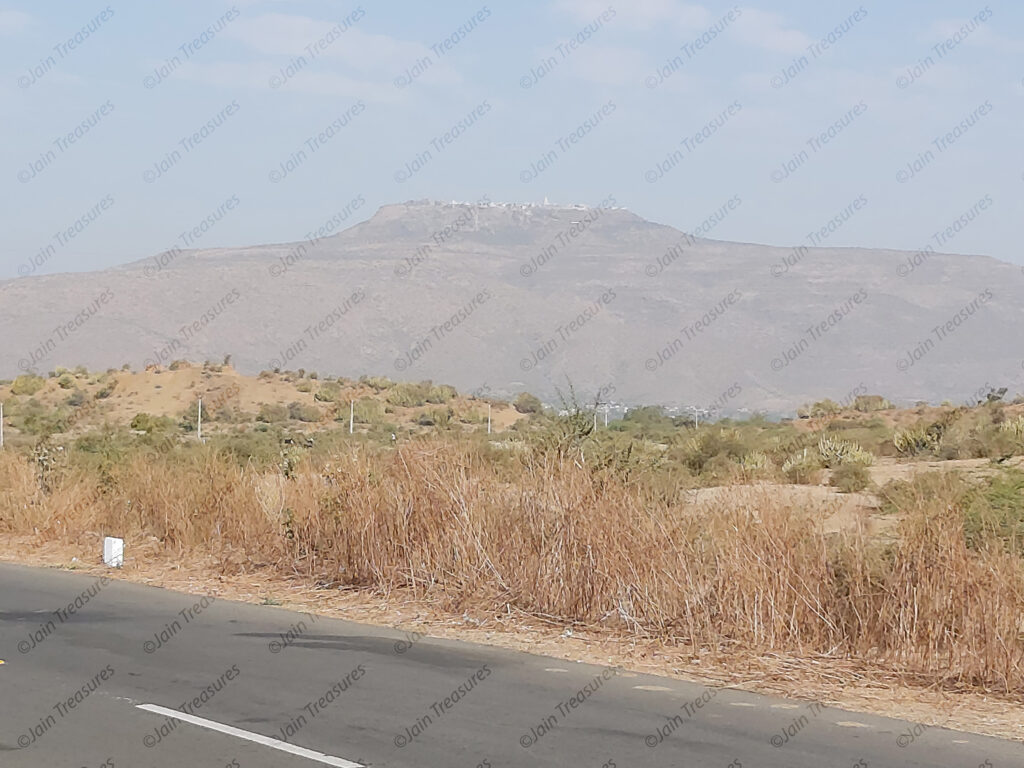
In the book “Glory of Jainism”, Dr. Kumarpal Desai has eloquently narrated the significance behind the construction of this tuk in 1619AD. It is a testament to the morality and magnanimous kindness towards fellow Jain brethern in distress.
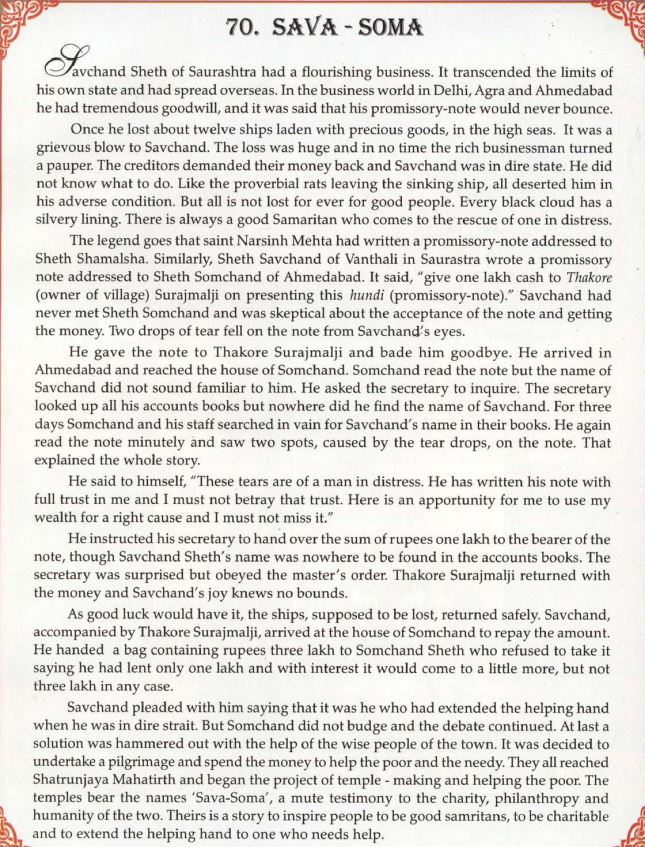
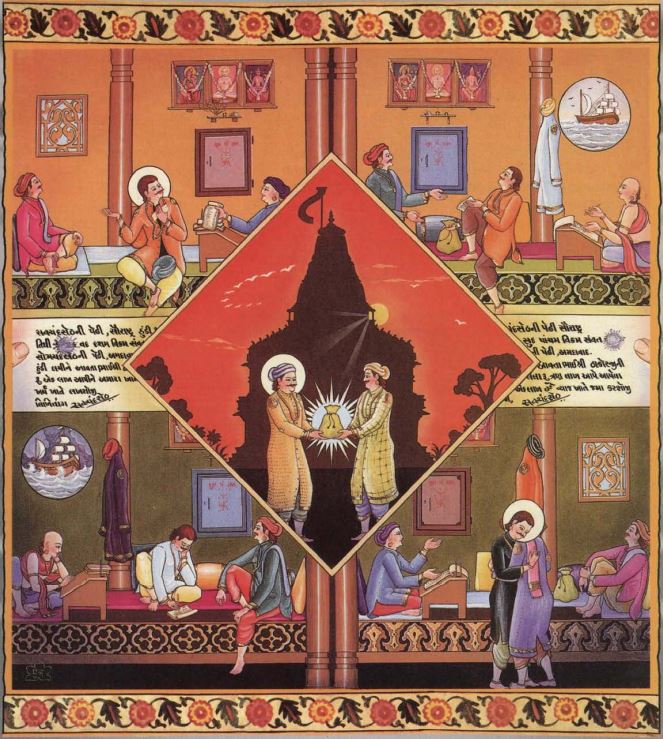
Click this link for another similar narration.
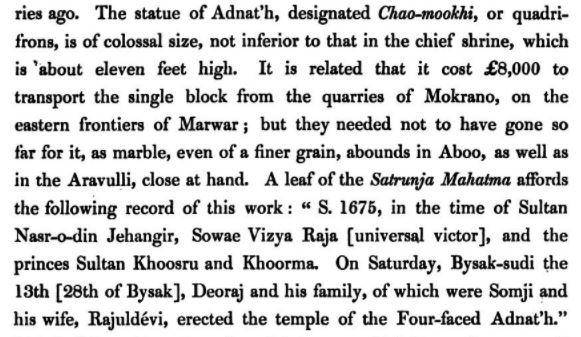
Hemavasahi Tuk
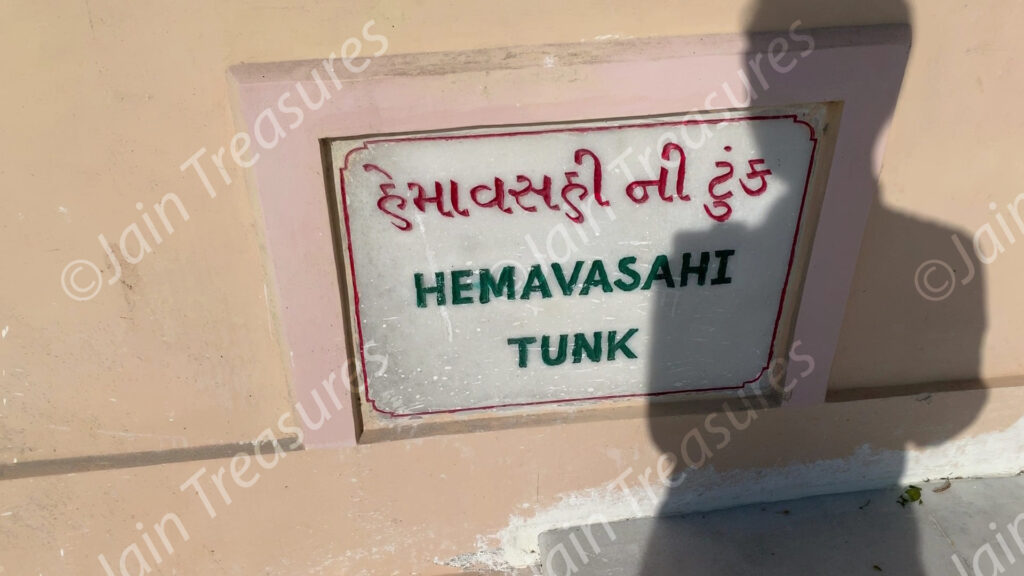

This temple complex was constructed by Hemabhai Vakhatchand of Ahemdabad in late 1820s. Hemabhai was the grandson of Sheth Shantidas Zhaveri who was the founding father of Anandji Kalyanji Pedhi which currently manages many prominent Jain temples including Shatrunjay, Girnar, Ranakpur, etc. Click here to read more about the legendery Sheth Shantidas Zhaveri who was the richest person in Ahemdabad during his era and a jeweller to King Akbar.
The presiding idol is that of Lord Ajitnath. There are four main temples within this complex and 43 smaller temples. In total there are 323 Jain idols in this tuk.
Ujamfoi ni Tuk
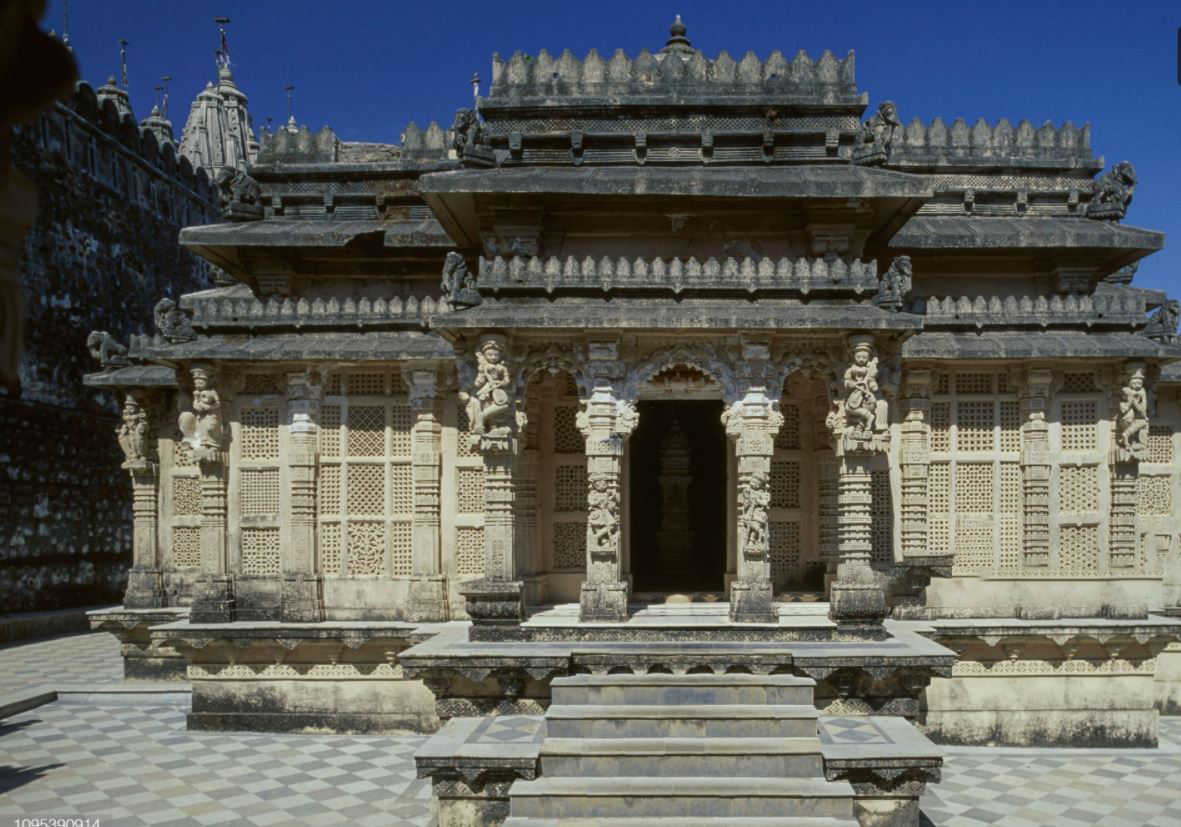
Ujam was the daughter of Sheth Vakhatchand. For her marriage she was given 500 carts full of dowry, but was not happy with this. She was asked what would satisfy her and she replied that she wanted a temple built on Palitana similar to what her brother, Hemabhai had done. Her wish was fulfilled and this temple is a testimony to her inspiration and devotion to the Jain faith.
This temple is unique in that it depicts the Jain cosmology which explains that in the middle world of the universe there are innumerable concentric islands and oceans. The 8th island is Nandishwar Dweep. It is believed that after celebrating Jineshwar Bhagwans Kalyankas, heavenly angles go to Nandishwar Dweep before returning to their heavenly abode.

The temple has pillars representing mountains having four murtis facing each of the cardinal directions with Mount Meru being at the centre.

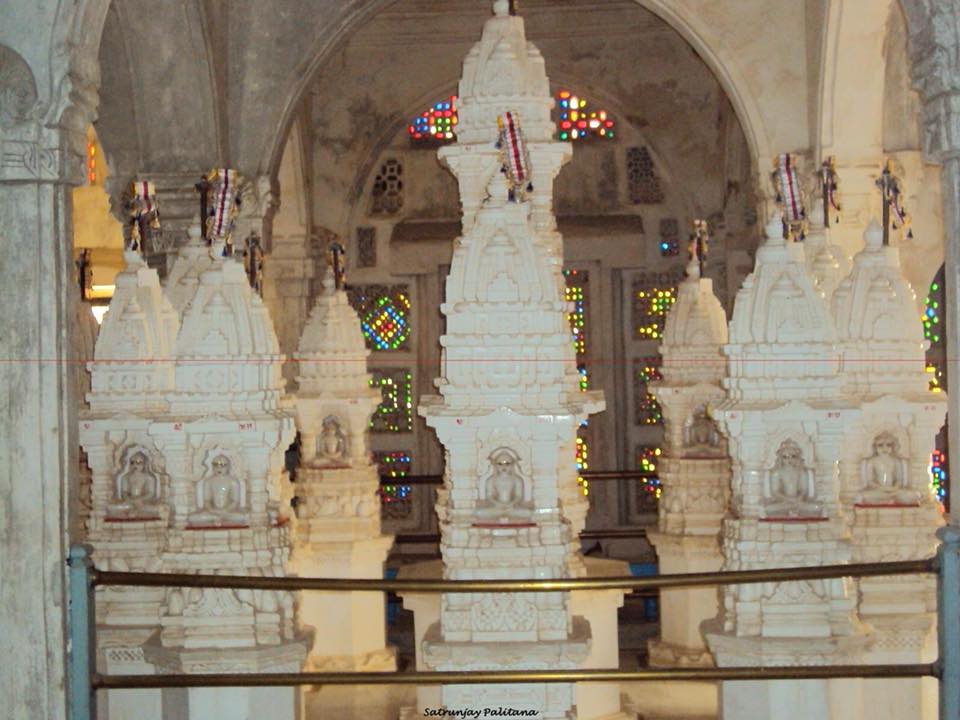
Balabhai Ni Tuk
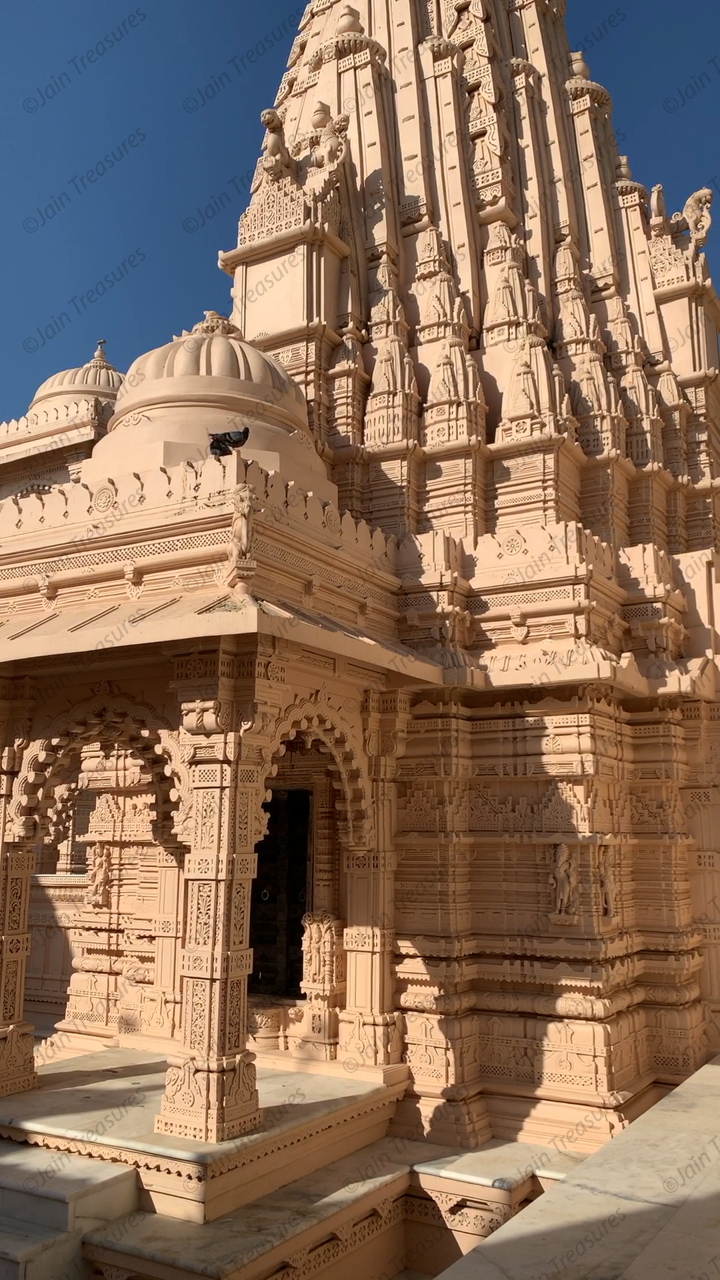
The main idol in this temple is Lord Adeshwar. There is also an idol Mata Marudevi seated on an elephant facing Lord Adeshwar. Although it is smaller in size compared to other tuks, it is believed to have many more idols.





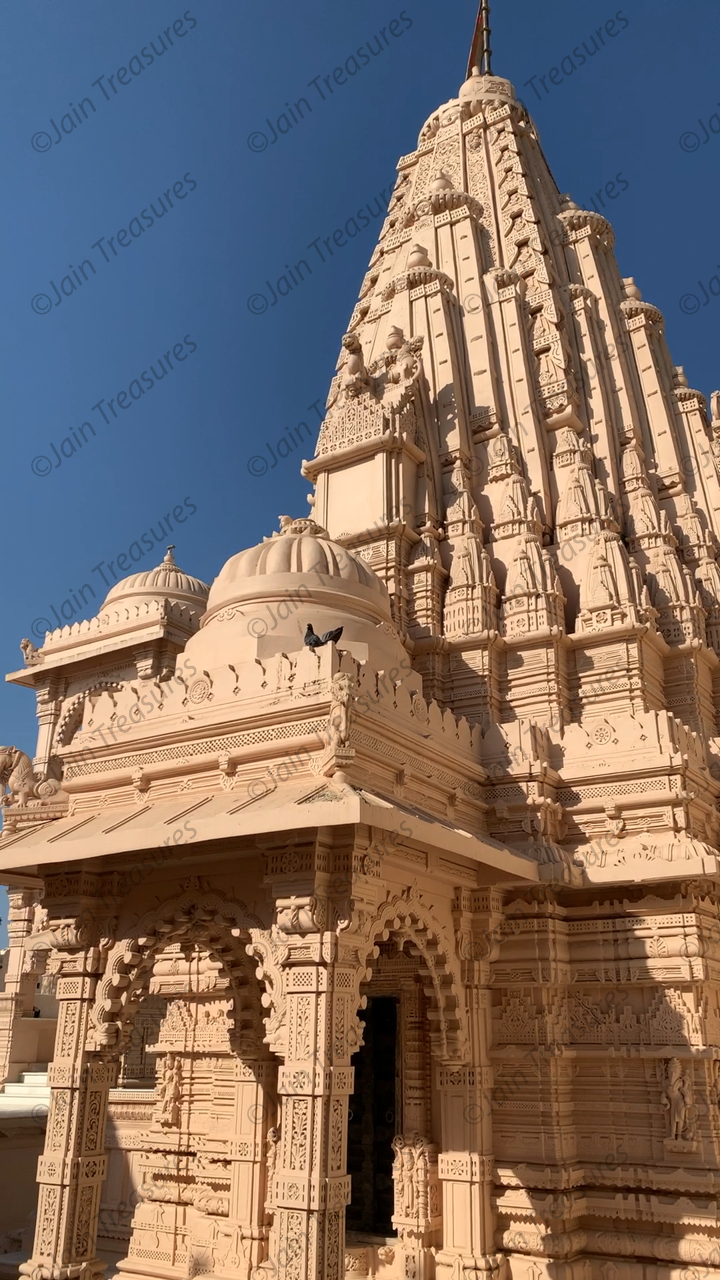

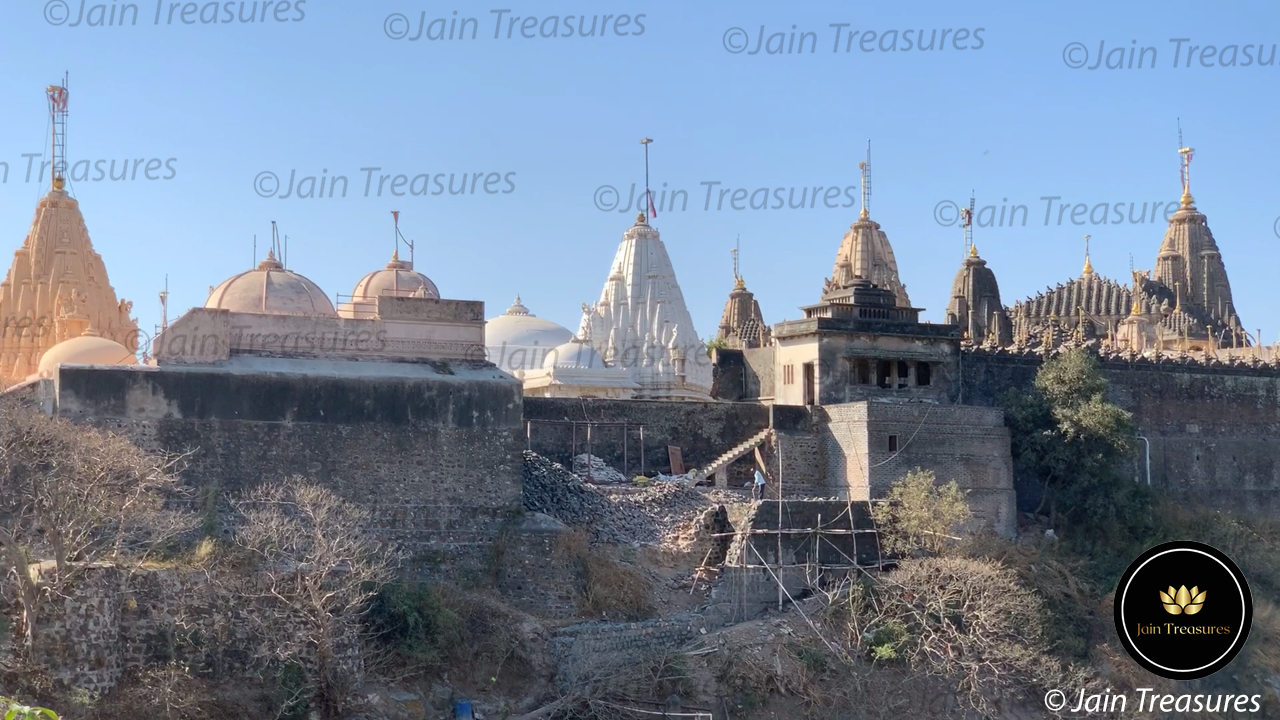
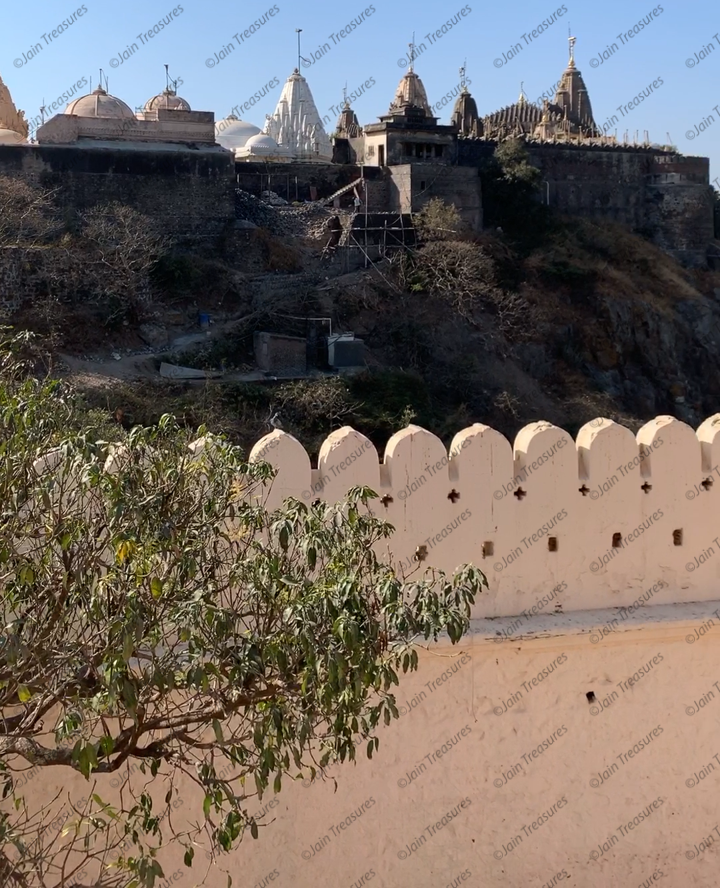
One version of the story I heard is that Balabhai was a clerk of Hemabhai who meticulously project managed the construction of Hemavasahi Tuk. Hemabhai asked Balabhai what he would like as a gift for his dedicated effort. Balabhai replied that just as you have constructed a landmark temple in Palitana could you also construct one for me and thus this tuk bears his name.
Another version of the story suggests that Balabhai (whose real name was Dipchandbhai), resident of Ghogha near Bhavnagar, constructed this temple in 1836AD. He is also the same person who built the Godi Parshwanath Jain temple which is one of the first Jain temples in Mumbai.
Premji Modi Ni Tuk

The main temple has the idol of Lord Adeshwar and was constructed by Premchand Modi over 200 years ago. He used to take many people (sangh) on a pilgrimage to Palitana and decided to build a temple there. Colonnel Todd, officer of the British East India company, has written* that he has not met anyone wealthier than Premchand Modi. The government of that time had given him the title of “Rai Bahadur“.
* Click this link to read in detail “Travels in Western India” by Colonnel Todd (page 288)
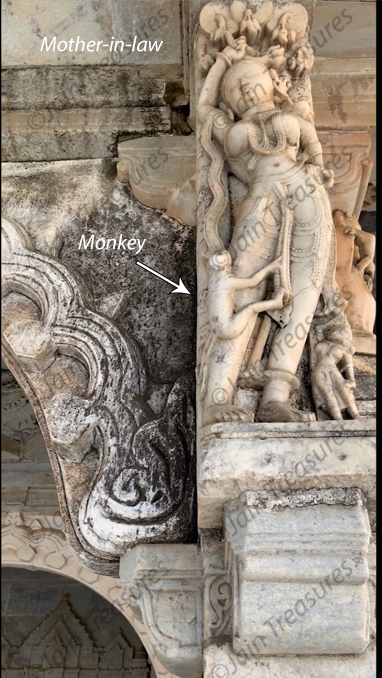


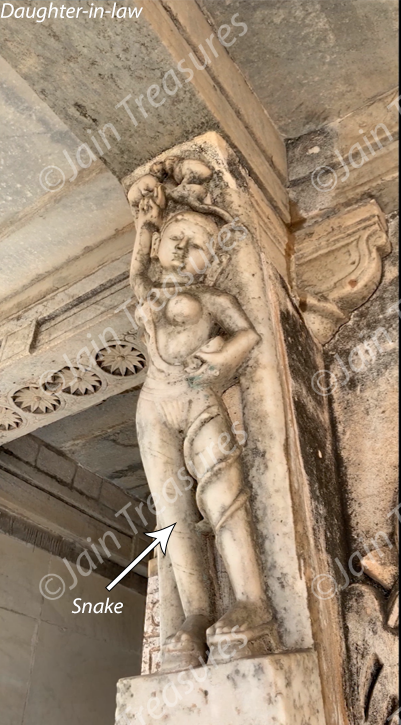

On the pillars of one the temples there are immaculate carvings which portray the Jain philosophy of karma.
There was a lady who used to gossip and aggravate her neighbouring mother-in-law and daughter-in-law by adding fuel to their squibbles. The mother-in-law was in charge of the family wealth and did not give any money to her daughter-in-law, especially when she wanted to go on a pilgrimage. Instead the mother-in-law taunted her daughter-in-law to get the money from her parents house. When the mother-in-law passed away, the daughter-in-law inherited all the wealth, and ironically lost all interest in spending money for good causes or going on pilgrimage. The mother-in-law reincarnates as a monkey whilst the neighbour reincarnated as a scorpion. The daughter-in-law reincarnated as a snake. This is one version of the story I heard.
Another version of the story I read is that the mother-in-law was always angry towards her daughter-in-law and therefore she was bitten by a snake. The neighbouring lady used to incite the quarrerls between the mother-in-law and the daughter-in-law and was therefore bitten by a scorpion. The daughter-in-law was constantly in a state of artha dhyana (misery) and was therefore bitten by a monkey. The moral of these intricate carvings is that we should not become angry, back bite or incite others or be in a state of misery and despair. Surrounding temples have mesmerising idols of Lord Parshvanath which are believed to have been found from the Arabian Sea.
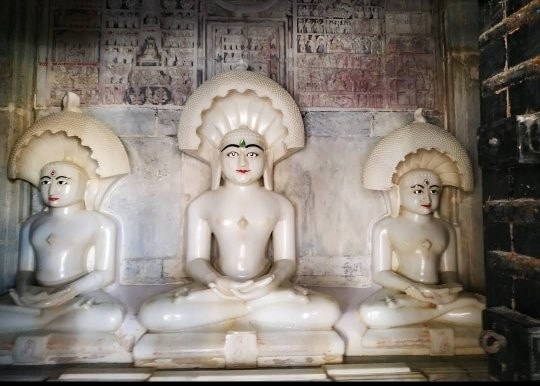
Sheth Narasinh Keshavji Tuk
Click on this link to read about the fascinating tale about Sheth Keshavji and his son Sheth Narshi on how from humble beginnings their destiny changed.
Moti Shah Tuk
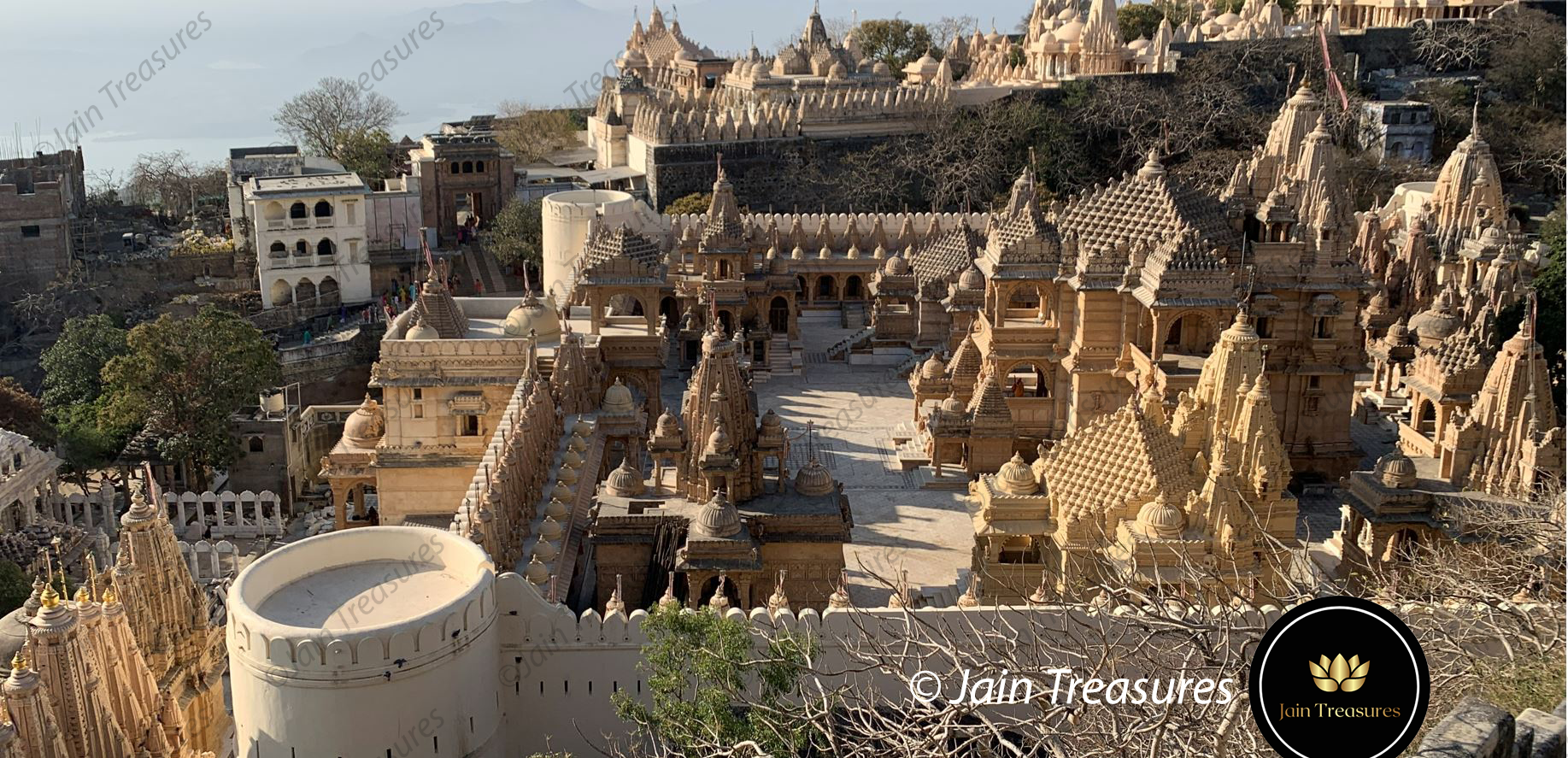
Moti Shah was trading with companies in China, Japan and England. At that time there was suspicion that one of his ships was engaged in illegal trade and was impounded. He made a resolution that if his ship is freed and he would utilise all the gains to build a temple at Shatrunjay.
The mountain was already filled with many temples and the only space that could be allotted was a deep canyon. He decided to level it up and build a temple in the shape of celestial plane called Nalini Gulam. 1100 sculptors & 3000 labourers worked for 7 years to build this majestic temple. Upon demise of Moti Shah, his son Khimchandbhai did the consecration of Lord Adinath’s idol in 1836. There are 16 main temples with approximately 125 smaller shrines within this complex. Before when people considered it to be a risk venture to cross the valley to reach the main temple of Lord Adinath, now there is a marvellous temple leading to the main temple.
Chhipa vasahi Tuk
Chippa vasahi Ni Tuk is the smallest of all the tuks. It was constructed in the early 1700s. Chippa brothers were skilled artisans who built this temple which can be seen in the intricate carvings and colourings on the dome and pillars.
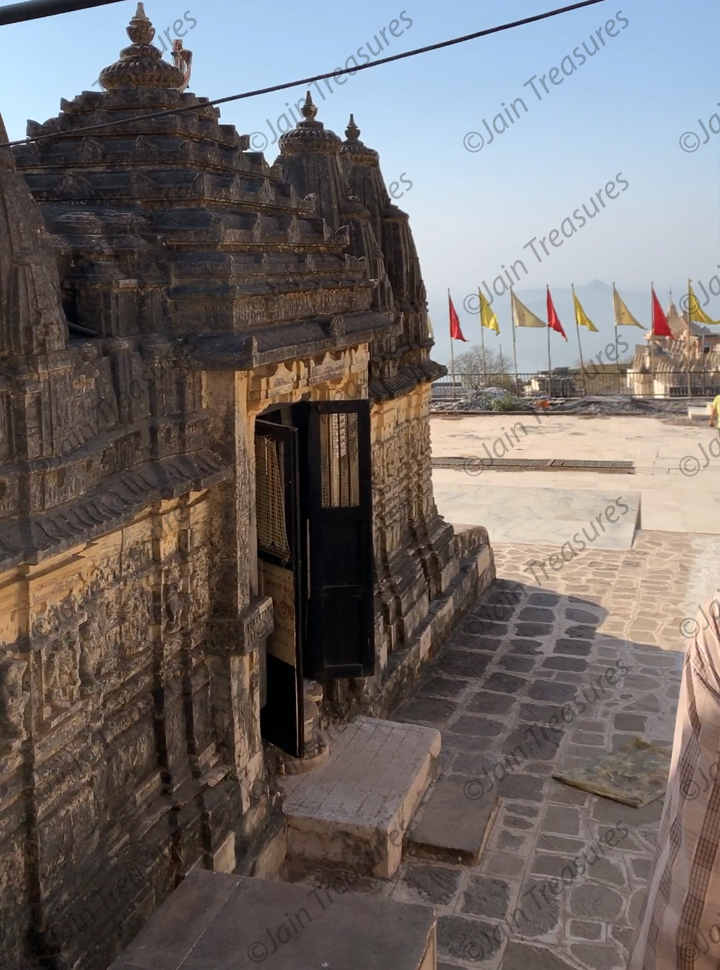
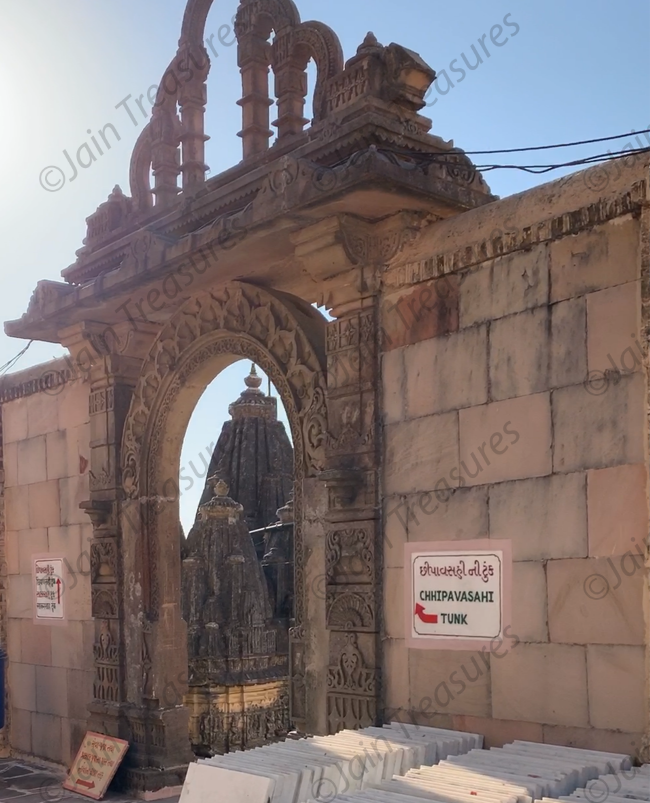

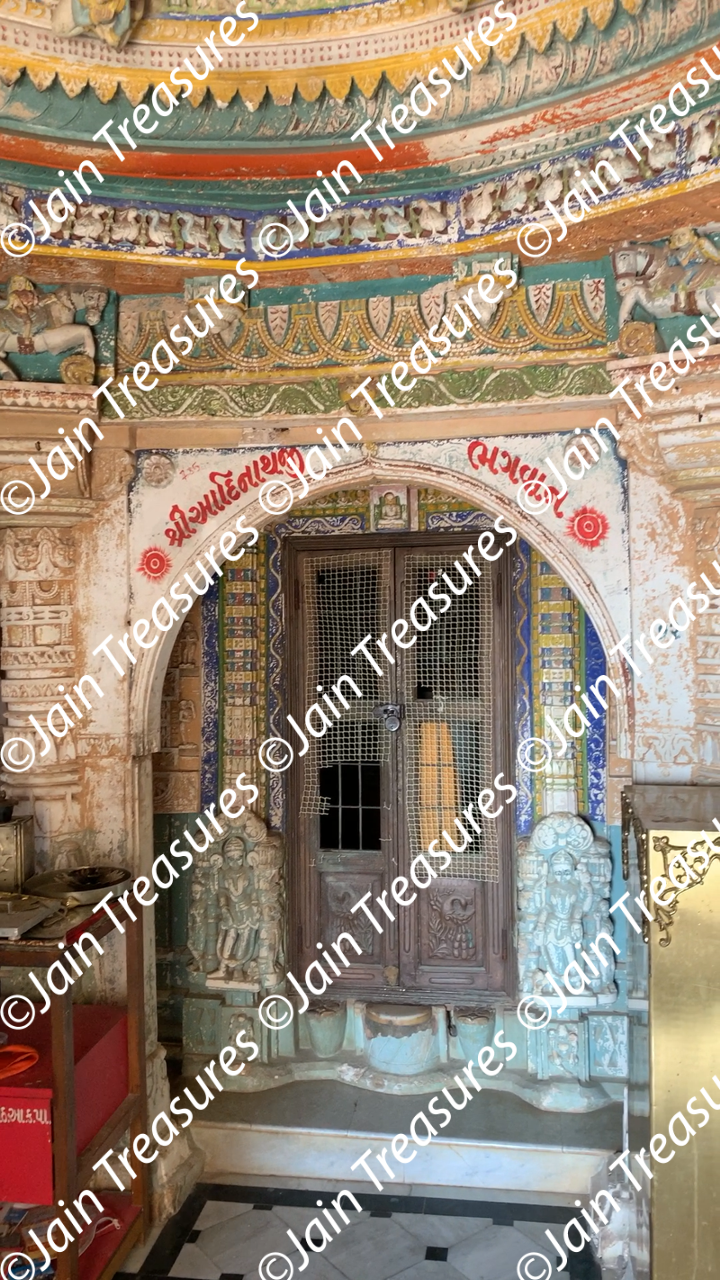
Sakar Vasahi Tuk
This tuk was built by Sheth Sakarchand Premchand of Ahemdabad in 1836. The main idol is that of Parshvanath Bhagwan made out of panch dhatu (alloy of five metals). All the idols in Shatrunjay Tirth are numbered and this idol is number 5789.
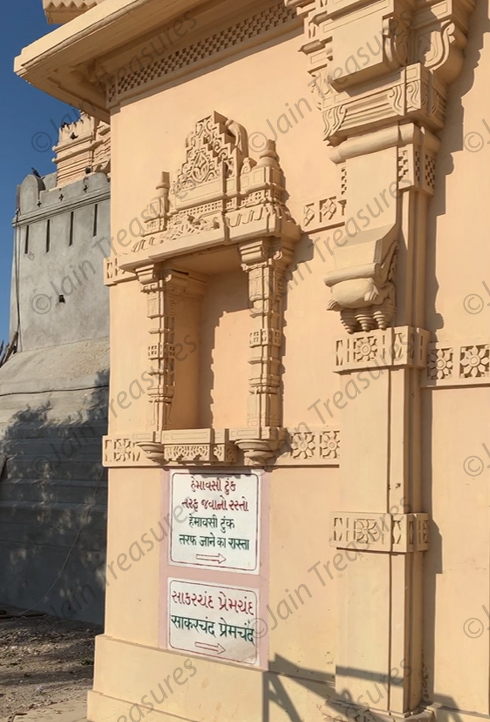
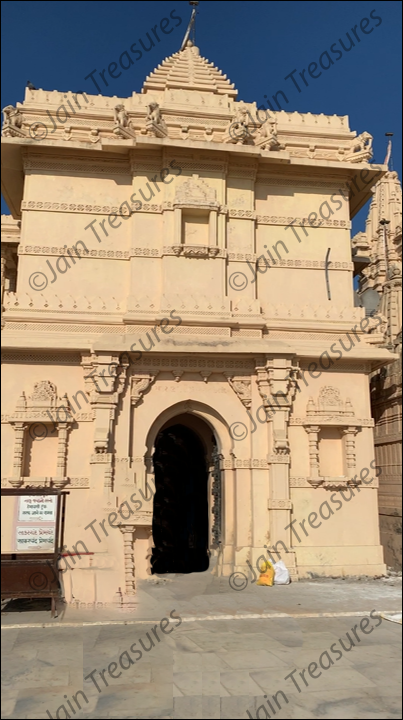
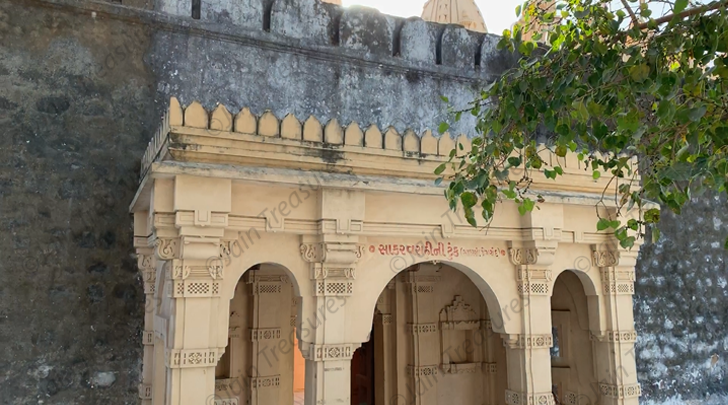
Mata Marudevi Temple
This is understood to be the only temple dedicated to Lord Adeshwar’s mother, Mata Marudevi, within the entire Shatrunjay complex of temples. Inside the temple her idol is seated on an elephant. She is believed to be the first person to attain salvation in this time cycle.
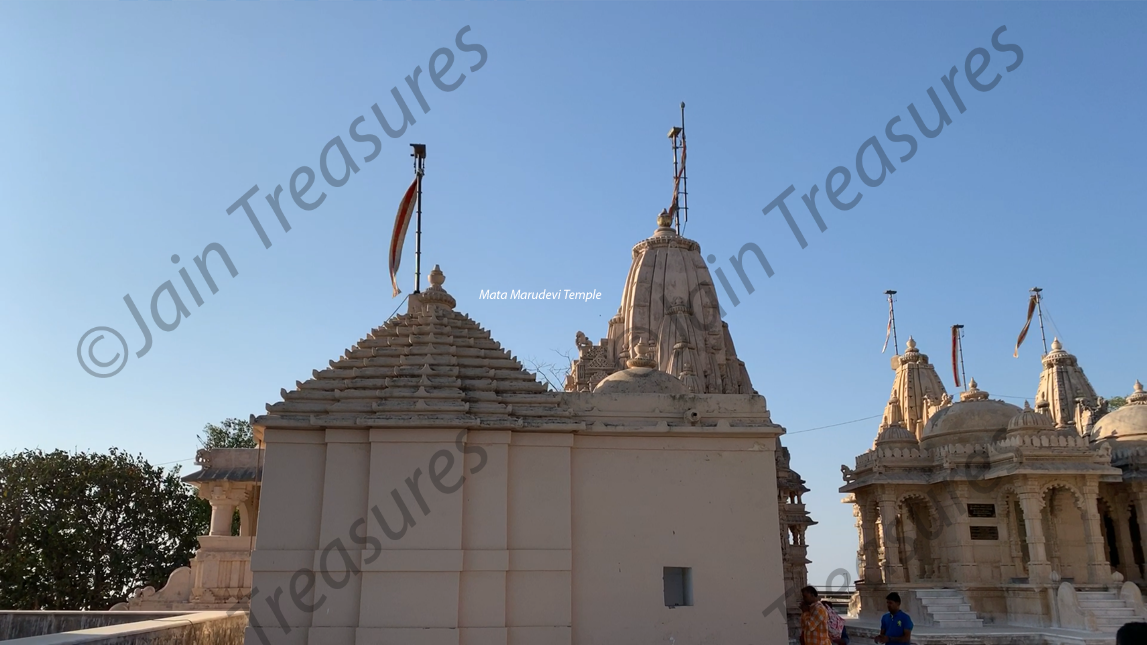
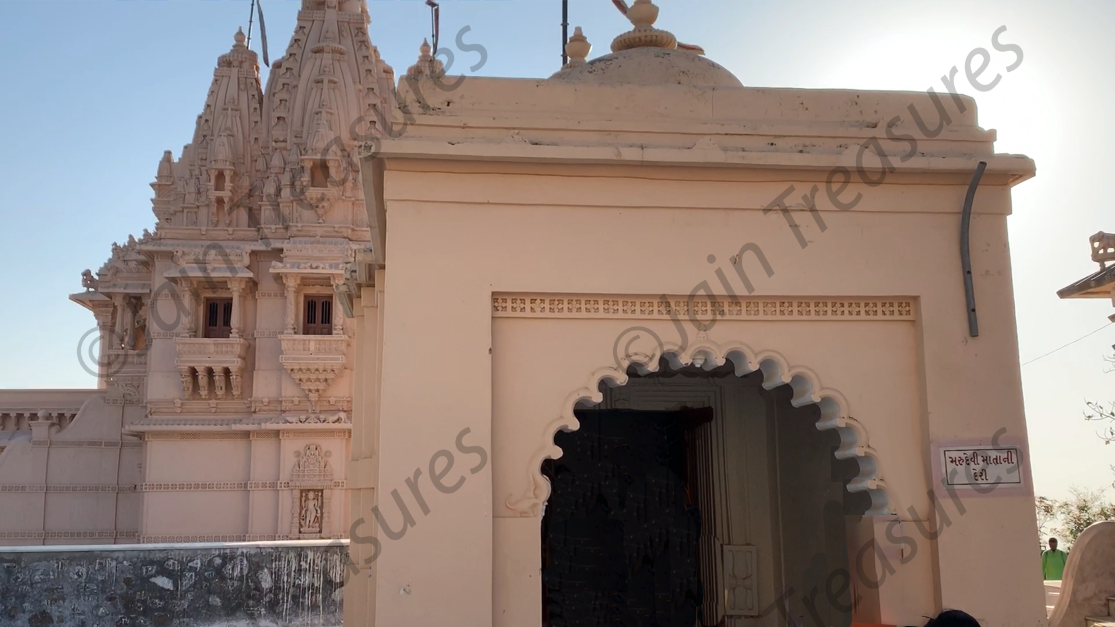
Panch Pandav Temple
In this temple there are idols of 5 Pandavas, Kunti and Dravpadi. According to Jain history, the 5 pandavas had performed the 12th major renovations of Shatrunjay temples. After the demise of Krishnaji, the 5 pandavas adopted asceticism. As they were approaching the holy mountain, they decided to break their penance after paying their obeisance to Lord Neminath. However, en route they learnt that Lord Neminath had attained salvation. They decided not to break their fast and instead came to Shatrunjay Tirth and eventually attained salvation with 20 crore monks.
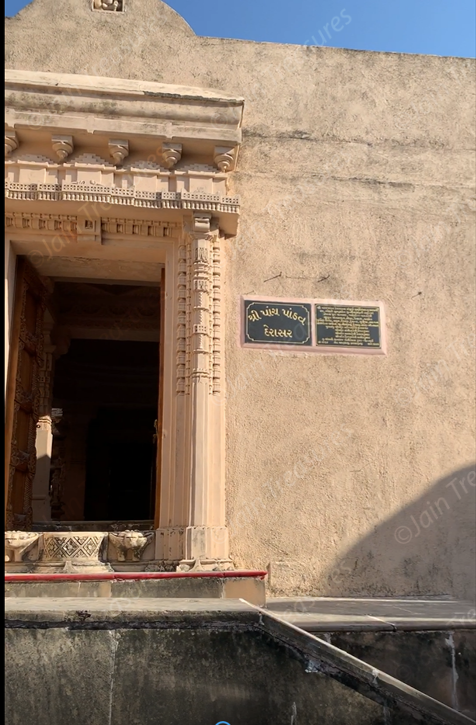
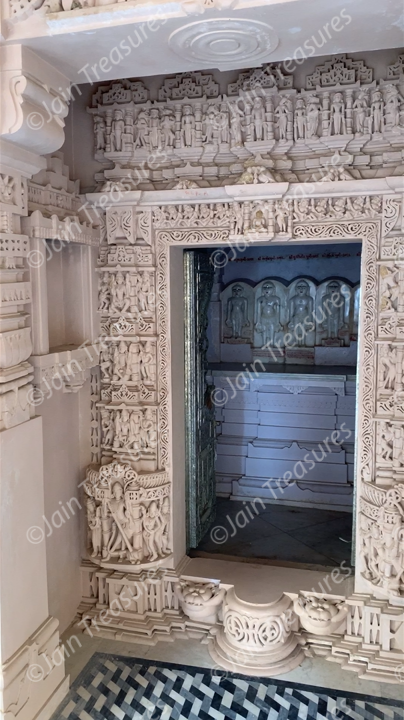

This temple was built by Pethad Shah.
Click this link to learn more about the illustrious personality Pethad Shah
Click this link for Pethad Shah’s story in Gujarati
Adbhut Adinath Temple
Adbhut means extra-ordinary or wonderful and indeed close to Balabhai ni Tuk is a magnificent temple having a colossal idol of Lord Adeshwar. It is also commonly known as Adbadji Adeshwar. It is 18 feet high, 14.5 feet wide.
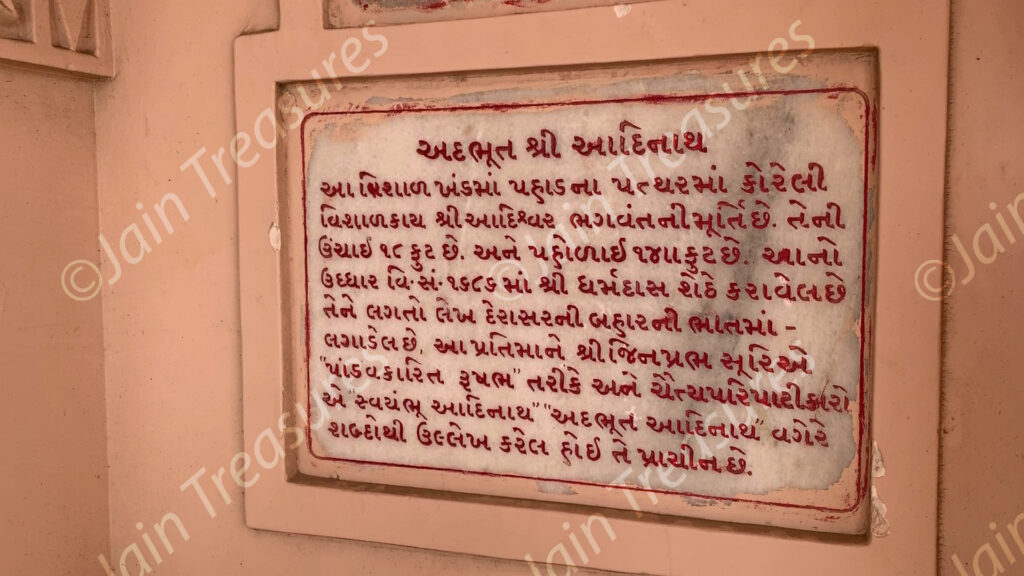
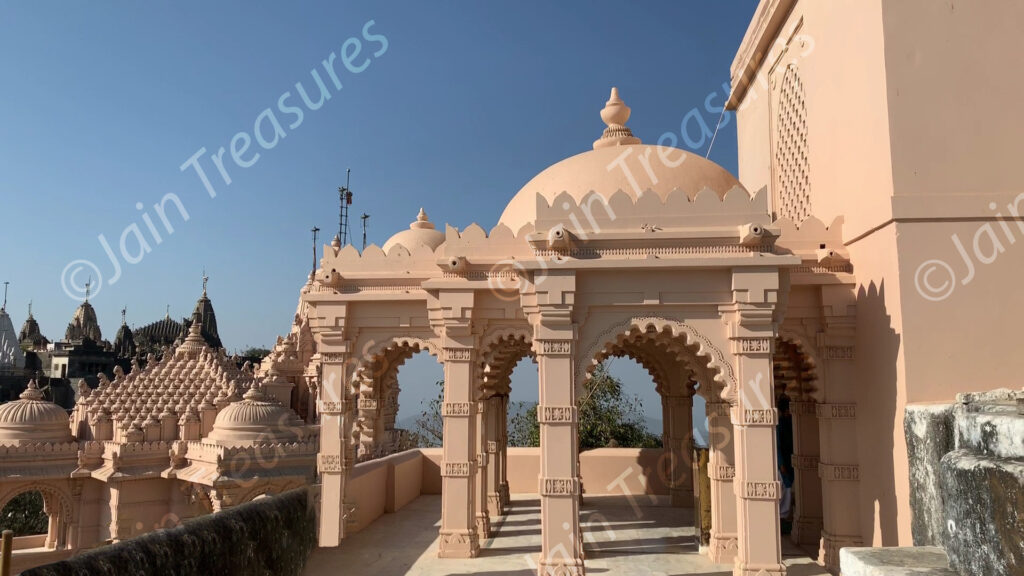
It is mentioned that Lord Adeshwar’s body was 500 dhanush tall. This idol is carved within the mountain rock and is believed to be 1/500th in size of Lord Adeshwar’s actual body. (In this day and age, imagining Lord Adeshwar’s body to be 9000 feet tall may seem surreal. If someone few decades ago predicted the devices and technology we are using at present, it would certainly have seemed unbelievable. Thus, we cannot imagine the effect of kaal (time), dravya (substances) and ksetra (location) and therefore need to have an open mind about events of the past and what may transpire in the future).
This temple was renovated by Sheth Dharmadas in the late 1620s.
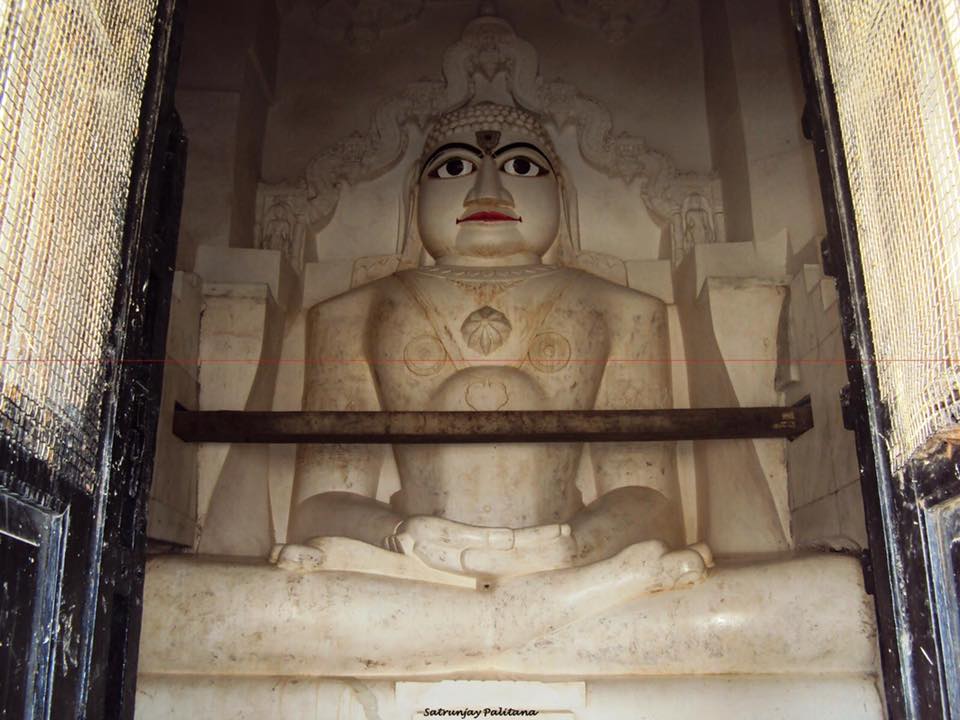
Ajitnath Shantinath Temples

In the centre of the photograph above you can see a pair of temples (white and brown in colour) which are called Ajitnath and Shantinath temples.
Ajitshanti Stotra is a melodious composition composed by Jain monk Nandishen. It is believed that as he was praying his back was facing the two temples which was considered to be a mark of disrespect. Miraculously, when he recited this stavan, both of these temples came side by side. Some believe it is these temples that moved side by side whilst others believe that it happened to Ajitnath Shantinath temples along the route of the 6 Gau yatra. Nandishen Muni had taken diksha from Lord Neminath and came to Shatrunjay with 7000 other monks and attained salvation here.
